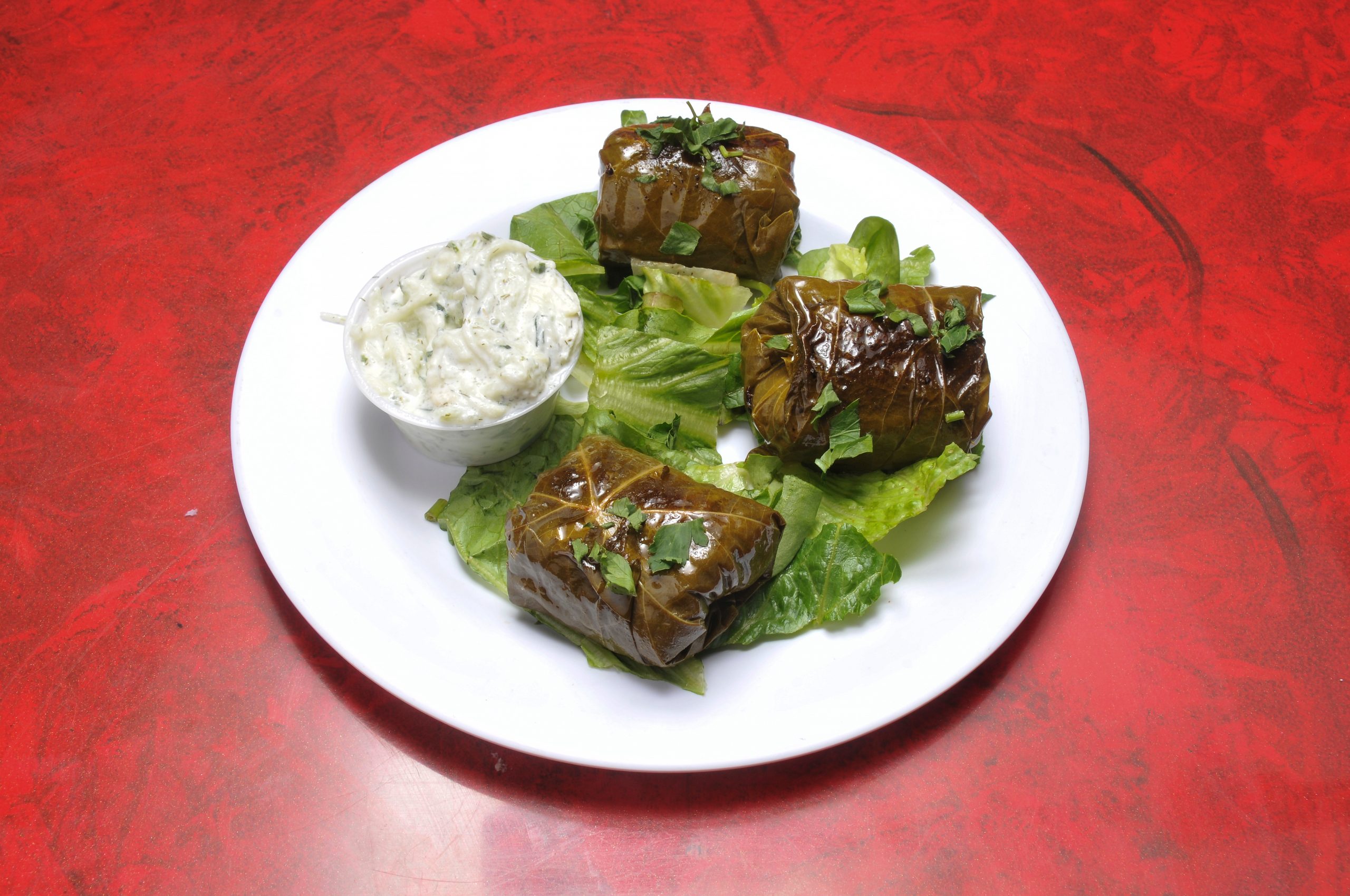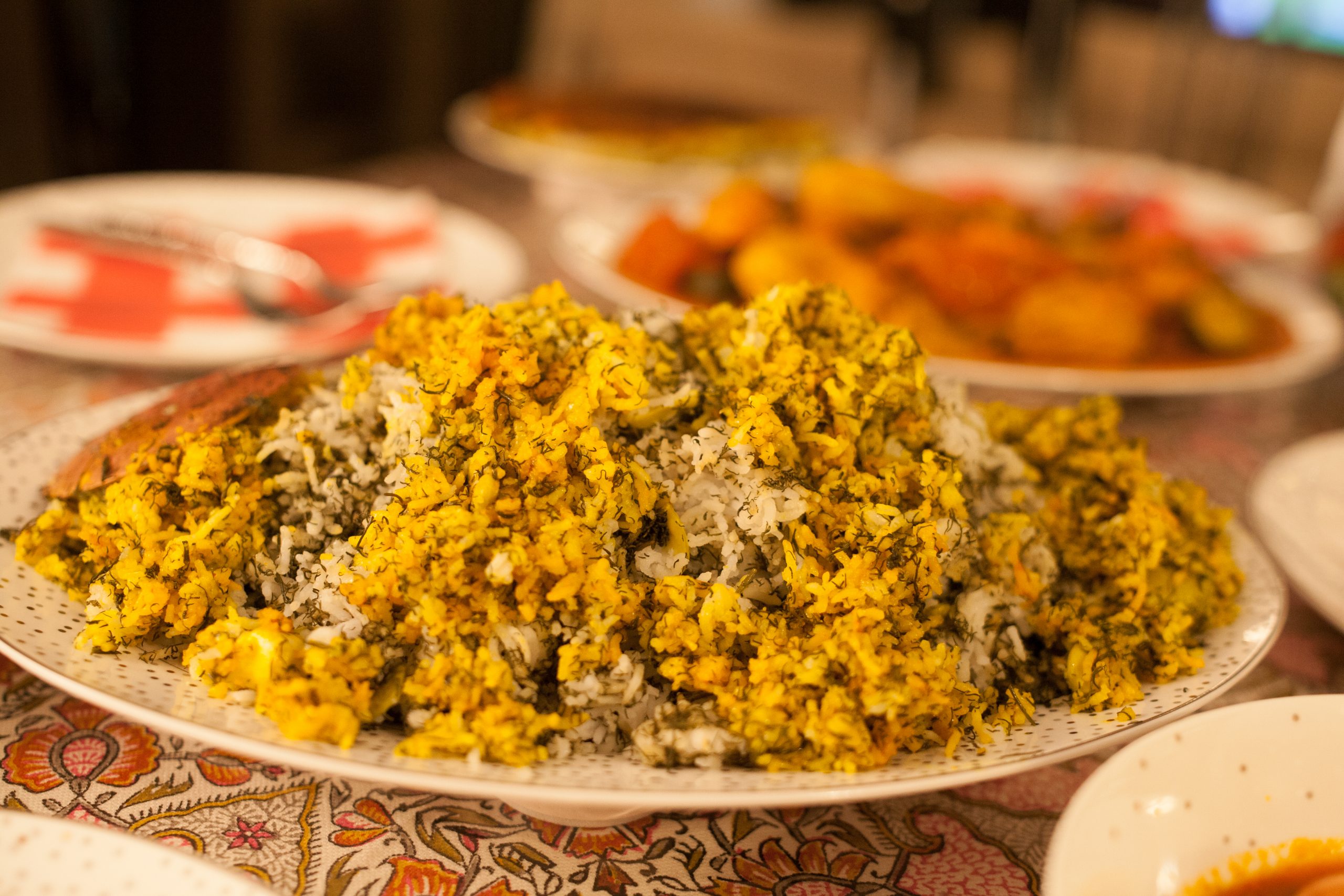Plant Based & Kosher: Esther’s Feast
Recipes for a fabulous pareve Purim seuda
by Shoshana Isaacson
UNORTHOBOXED Magazine Food Editor
One of the mitzvot of Purim is to have a festive meal. What better way to do this than to model our meal after the feast that Esther prepared for King Ahasuerus and the evil Haman? The midrash says that while living in the palace she ate a diet of seeds, nuts and grains so as to not reveal her Jewish background and to be able to keep the laws of kashrut. It is easy to close one’s eyes and imagine the beautiful spread of plant based foods Esther served her guests: salads, stews, grains, sweets and fresh fruits. Here are a few recipes to prepare for your table this Purim.
What Persian meal would be complete without dolmeh? We are used to seeing dolma, the Greek variation (stuffed grape leaves) but throughout the Middle East there are versions of this delicious hors d’oeuvres. In Persian the word ‘dolmeh’ actually means ‘stuffed’ and can apply to a wide variety of vegetables and leaves with different fillings. Dolmeh Barg are stuffed grape leaves, they are filled with a mix of rice and lentils seasoned slightly differently from the more widely known Greek dolma. The shape is also different. Rather than being shaped like a cigar, a Persian stuffed grape leaf is more square, more of a pillow shape.
* All recipes are written by the author and may not be copied or reprinted without the author’s permission.
Dolmeh Barg
By The Out of Town Cook – Shoshana Isaacson
Ingredients
Grape leaves – jarred in brine are perfect
2 cups brown jasmine rice, cooked al dente
1 cup split peas/green lentils, cooked al dente
2 ½ cups of any combination of fresh fragrant herbs such as: basil, mint, savory, dill, parsley, cilantro, fenugreek
1 large onion, finely chopped
1/2 cup raisins
2 tablespoons of tomato paste
½ to 1 ½ teaspoons turmeric
Salt & pepper, to taste
For Marinade:
Mix together 1 1/2 cup water, 1 cup lemon juice, 4 tablespoons of sugar and 1/2 cup of oil for the marinade.

Step by Step Instructions
Step 1
Prepare the stuffing by first cooking the rice. Prepare the rice in the normal way, but add 1 teaspoon of turmeric to the liquid. When the rice is al dente (firm but cooked) drain any remaining liquid and set aside.
Step 2
Chop the fresh herbs roughly and add to the rice.
Step 3
Chop the onion and in a frying pan with a small amount of oil, 1 teaspoon turmeric, salt and ground pepper saute the onion until it is soft and translucent.
Step 4
Add the raisins to the frying pan.
Step 5
While the rice is cooking, cook the peas/lentils in enough water so that they reach the al dente state as well.
Step 6
Drain any excess water and add the peas to the rice mixture.
Step 7
Once the onions and raisins have cooked, add the rice mixture to the large frying pan and saute for a few minutes to combine.
Step 8
Add the tomato paste and stir to combine.
Step 9
Once all items are well combined, remove from the heat and set aside.
Step 10
Next, prepare the grape leaves.
Grape leaves, whether fresh or jarred, need to be rinsed and blanched in boiling water for 2 to 3 minutes before using them.
Step 11
Remove from the boiling water and plunge into a bowl of ice water.
Step 12
Remove the grape leaves and dry on a flat surface. (Only blanch the grape leaves once the stuffing is ready.)
Step 13
Lay a prepared grape leaf vein-side up on a flat surface.
Step 14
Place about 1 tablespoon of filling slightly off center.
Step 15
Fold the stem side of the grape leaf over the filling.
Step 16
Then carefully fold in each side creating a squarish shape.
Step 17
Roll the grape leaf away from you until fully enclosed.
Step 18
Place a few grape leaves into the bottom of a deep pot.
Step 19
Place each rolled dolmeh on top of these leaves, folded side down.
Step 20
Continue until all of the leaves are filled, layering them in the deep pot.
Step 21
Mix the ingredients for the marinade together and pour this over the dolmeh.
Step 22
Place a heat-safe plate onto the dolmeh to keep them submerged while heating.
Step 23
Cover the pot and heat to a simmer for one to two hours until all of the dolmeh are cooked through.
Step 24
Serve hot or cold.
Another must-have on any Persian table is rice. The following dish has the classic crispy outer crust associated with Persian steamed rice dishes, as well as being filled with fragrant herbs and hearty fava beans.
Vegan Baghali Polo, Persian Dill and Fava Bean Rice
A version of a rice tahdig
Makes 4 to 6 servings
Ingredients
3 cups basmati rice
2 bunches of fresh dill OR 8 tablespoons dried dill
3 cups fava beans, peeled and cooked, or alternatively large lima beans may be used
2 tablespoons salt
Oil

Step by Step Instructions
Step 1
Rinse 3 cups of basmati rice until the water is no longer cloudy.
Step 2
Boil in 8 cups of boiling water with 2 tbsp of salt until half-cooked, about 6 to 8 minutes. The rice should be tender but still hard in the middle.
Step 3
Drain the half-cooked rice in a colander, rinse with cold water to stop the cooking process.
Step 4
Place some fava beans and dill into the bottom of a deep nonstick pot. Mix 1⁄4 cup of oil into 1 cup of the half cooked rice. Spread the rice-and-oil mixture evenly over the beans and dill.
Step 5
Place a quarter of the remaining rice on top and then add a quarter of the dried or fresh dill and mix gently with a fork. Repeat by adding more broad beans and dill, rice, layering each until all the ingredients have been used up. Be careful not to mix the layers.
Step 6
Poke 5 holes into the rice with the back of a spoon but be careful not to disturb the bottom. Pour ¼ cup oil through a slotted spoon over the rice evenly.
Step 7
Wet a thin dish towel with water. Wring it out well and place it over the top of the rice. Place the lid onto the pot on top of the damp towel. Seal the pot by covering it with heavy aluminum foil and tightening around the edges. This will keep the steam in the pot and allow the rice to cook.
Step 8
Place over a medium heat for 10 minutes.
Step 9
Turn the heat down to lowest setting and allow the rice to steam for 40 to 45 minutes.
Step 10
When it is ready, remove the lid and towel from the pot. Place a large dish over the pot and flip it upside down to reveal your tahdig. You may wish to run the bottom of the pot under running cold water to make sure the tahdig has separated from the sides of the pot.
